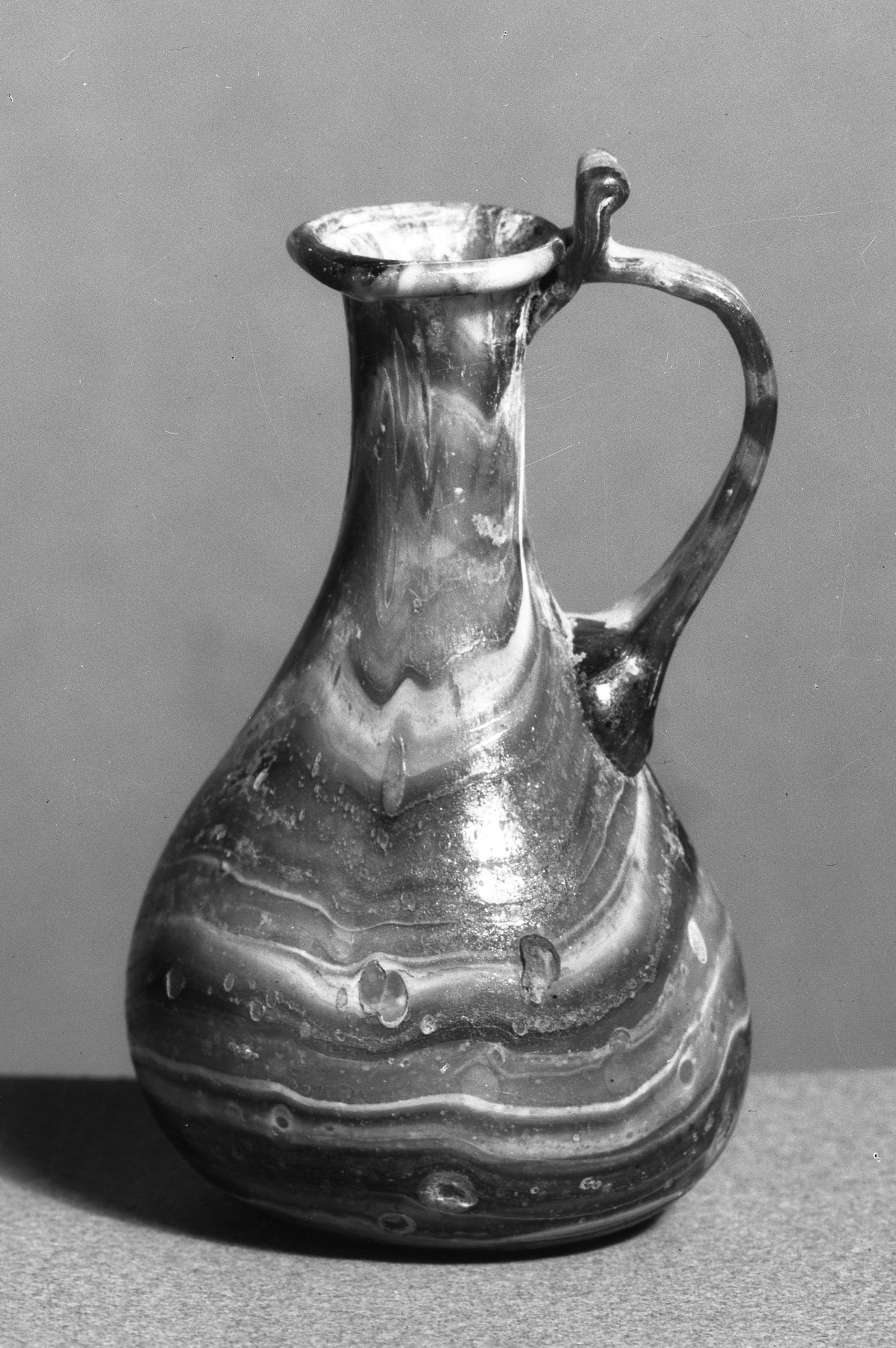Jug
(Roman Empire )
This pyriform blown glass jug sits on a flat base with a cylindrical neck that flares out to a funnel shaped mouth. The handle was separately created and joins the body of the vessel to the mouth, with an upwardly projecting thumb rest at the rim. The multi-colored, swirling surface of this jug, or "marbling" effect, was used frequently in 1st century CE Roman glass production. It evoked the colorful and expensive marble that was flooding into Rome from around the Empire during this period, which was used by the elite to decorate everything from private houses to elaborate public temples. Such small tear-shaped glass jugs were popular throughout the Mediterranean world and were commonly used as perfume bottles. The marbled decoration, indicating an origin in the eastern Mediterranean, could have made the piece appealing to a 17th-century collector.
Provenance
Provenance (from the French provenir, 'to come from/forth') is the chronology of the ownership, custody, or location of a historical object. Learn more about provenance at the Walters.
Dikran Kelekian, Paris and New York [date and mode of acquisition unknown] [said to be from Syria]; Henry Walters, Baltimore, 1928, by purchase; Walters Art Museum, 1931, by bequest.
Exhibitions
| 1982 | 3000 Years of Glass: Treasures from The Walters Art Gallery. The Walters Art Gallery, Baltimore. |
Conservation
| Date | Description | Narrative |
|---|---|---|
| 3/23/1982 | Treatment | cleaned |
Geographies
Syria (Place of Origin)
Measurements
H: 4 1/8 × W: 2 3/8 × D: 2 3/16 in. (10.4 × 6 × 5.5 cm)
Credit Line
Acquired by Henry Walters, 1928
Location in Museum
Accession Number
In libraries, galleries, museums, and archives, an accession number is a unique identifier assigned to each object in the collection.
In libraries, galleries, museums, and archives, an accession number is a unique identifier assigned to each object in the collection.
47.74


